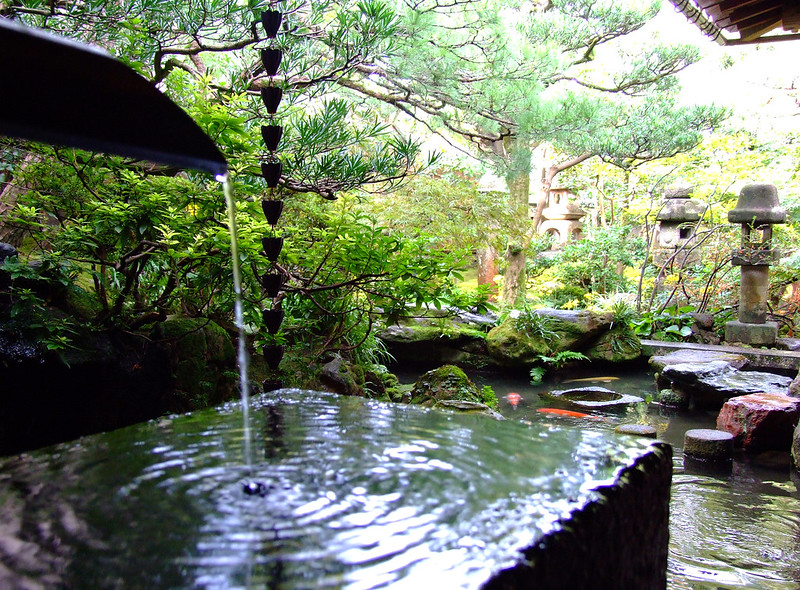
The One of Kind Melody of a Suikinkutsu
Japanese gardens or nihon teien are traditional gardens made using the designs of Japanese aesthetics and philosophical ideas. Japanese gardens usually highlight the natural landscape setting.
The unique appearance of traditional gardens began during the Asakusa period (538 to 710), when Japanese merchants picked up the idea from the gardens they saw in China.These merchants brought back many of the Chinese gardening techniques and styles to Japan. Today, the popularity of Japanese garden art has spread all around the world.
Water koto cave.
Japanese gardens are deeply associated with the Shinto religion and the story of the creation of the eight perfect islands and the lakes of the gods, the shinchi. Prehistoric Shinto shrines to the Japanese gods and spirits are found in forests and beaches all over the island. These prehistoric shrines oftentimes take the form of unusually shaped trees or rocks marked with cords of rice fiber and surrounded with white pebbles or stones which are symbols of purity. The white gravel courtyard has become a distinctive feature of Shinto shrines, Buddhist temples, zen gardens, and Imperial Palaces.
A suikinkutsu or “water koto cave” is a type of Japanese garden ornament that creates a musical splashing sound. It is made from a buried upside down pot with a hole on top. Water drips through the hole at the top onto a small pool of water inside the pot. The dripping water creates a melodious splashing sound that reverberates from within like a bell or a Japanese zither (koto).
Suikinkutsu.
A suikinkutsu is usually built next to a traditional Japanese stone basin called a chōzubachi. A chōzubachi is part of a tsukubai which is used for washing hands before the Japanese tea ceremony.
The sound the a suikinkutsu makes is called suikin’on and can further be divided in two subgroups, ryūsuion and suitekion. The sound made by the first few water drops when you begin to wash your hands is called ryūsuion while the suitekion describes the sound of water falling while washing your hands as well as the sound of slower drops towards the end of washing.
A good quality suikinkutsu has water drops that come from the different spots on the surface of the jar. Unglazed jars are said to hold moisture better.These allow more drops to come from more spots on the jar’s surface. The impact of the water creates a sound that is amplified depending on the design of the jar.
Some suikinkutsu use a bamboo tube which can amplify the sound of the drops of water. It is said that each suikinkutsu produced creates its own unique sound.


